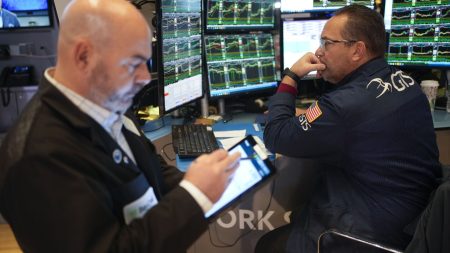As the United States prepares for its final jobs report before Election Day, economists are anticipating distorted figures due to the impact of hurricanes and worker strikes in October. The data is expected to show a reduced job growth of 120,000 jobs, with the unemployment rate remaining steady at 4.1%. Despite these temporary setbacks, the overall job market is expected to remain solid, supported by consumer spending and resilience in the face of high interest rates from the Federal Reserve.
The government’s inability to fully measure the effects of the hurricanes and strikes may lead to an incomplete picture of the job market. While some jobs were lost due to the strike by Boeing machinists, other factors such as job gains in cleanup and rebuilding efforts following the hurricanes may offset these losses. The government’s data collection methods may not fully capture the impact of these events, leading to uncertainties in the interpretation of the report.
Critics of the government’s monthly jobs reports, including Republican allies of Donald Trump, have sought to undermine the credibility of the data. Despite the overall positive indicators in the job market, baseless claims of manipulation and fraud have been made by some political figures. Mainstream economists, however, view the Bureau of Labor Statistics as a transparent and reliable source of information, and revisions to initial estimates are a normal part of the data-gathering process.
The revision of job counts and the portrayal of job gains among foreign-born workers have been points of contention for some critics. The government’s revisions are meant to ensure accuracy and timeliness in reporting, and the increase in foreign-born workers with jobs does not necessarily indicate that all job gains have gone to immigrants. In reality, native-born Americans have been retiring at higher rates, leading to a need for more workers in the job market and a lower unemployment rate for this demographic group.
Overall, the upcoming jobs report will offer a snapshot of the economy just days before the election, providing important insight into the state of the job market. Despite the temporary distortions caused by hurricanes and strikes, the underlying strength of the economy, supported by consumer spending and low unemployment, is expected to be reflected in the report. As the Federal Reserve prepares for its next meeting after the election, the jobs data will play a crucial role in shaping economic policy moving forward.















